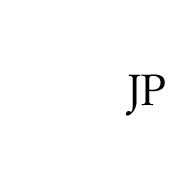
W:NAKAI Tsuneo: COLLECTED EARLY WORKS
5works73min

PALUDES NAKAI Tsuneo
Not many people know that an “Experimental Film Production group” existed almost half a century ago at Tokyo University of the Arts. Of three works created in this department entered in “Film Art Festival Tokyo 1968,” only one received an Encouragement Prize. This was a work entitled “PALUDES.” Its writer, director, and co-cinematographer was NAKAI Tsuneo, a fourth year student in the Fine Arts Department’s Japanese Painting Program. This was his second success, having had THE DOZING SKIN selected for screening at this festival’s previous incarnation, “The 1st Sogetsu Experimental Film Festival,” a year earlier. For artists thinking about ways of dealing with “pseudomorphous reality” in the midst of the student movement, the independent production of moving image works may have been an “art” that offered an alternative to psychedelic drugs as a method of shaking up reality and inspiring visions of a new era.
On the other hand, NAKAI’s film works in the early 1970s that wavered between materiality and immateriality can also be thought of as sharing a common element with his first solo exhibition (Tamura Gallery, 1971), which featured an installation that lit a fire in the middle of the gallery. In Lumiere, inspired by Michael SNOW’s Wavelength (1967), the light of Hiratsuka’s horizon approaches a sandy beach. This work, which shows a transition to a different approach, was often screened as an opening film by TERAYAMA Shuji, who refused NAKAI admittance into his Tenjo Sajiki group on the grounds that he was still a student. At the artist’s request they have not been included in this program, but and ELIXIR are two works in which he developed the negative/positive transition and flicker effects he would later use in ALCHEMY (1971), one of his most well-known works that won the Grand Prix at the 5th Brussels Experimental Film Festival. AZOTH, with its title that signifies the panacea (mercury) that in alchemy was considered to be the base element of all metals, is particularly worth noting. This chemical reaction of images and sound, in which liquefaction and vaporization are repeated over and over again, has the power to make the here and now evaporate.
MA Jung-yeon(Media Image)
PALUDES NAKAI Tsuneo / 16mm / 20min. / 1968
THE DOZING SKIN NAKAI Tsuneo / 16mm / 20min. / 1967
LUMIERE NAKAI Tsuneo / 16mm / 3min. 1971
AZOTH NAKAI Tsuneo / 16mm / 20min. / 1973
ELIXIR NAKAI Tsuneo / 16mm / 18min. 1973
NAKAI Tsuneo
Born in Osaka in 1947. Graduated from Tokyo University of the Arts. Began making experimental films in the late 1960s, and won an Encouragement Prize at the Film Art Festival for PALUDES (1968). ALCHEMY (1971) won the Grand Prix at the 1974 Festival international du cinéma expérimental de Knokke-le-Zoute (EXPRMNTL). Later expanded the scope of his activities to include video art and media art. His video collage Artificial Paradise (1989) was invited to documenta 8. Organized the video exhibition “Video Cocktail” in the early 1980s. Recent media installations include TOKYO ATOMIC BOMB (2009) and ilinx (2011).
Schedule
TOKYO:5/4 19:00, 5/7 16:00 W programKYOTO:5/14 19:00 W program
YOKOHAMA:6/17 14:00 W program
NAGOYA:6/23 14:50 W program






